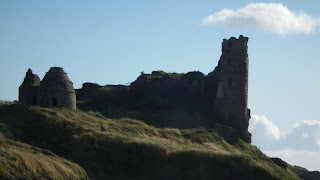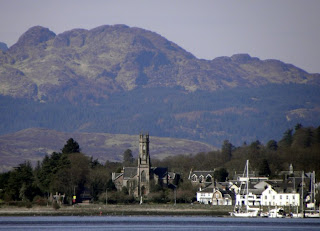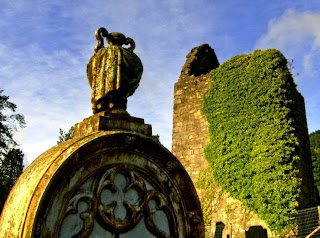







Dunure Castle lies on a cliff edge by the small coastal village of Dunure,a craggy picturesque ruin which is maintained by Historic Scotland.
The castle was the first built by the Kennedy family, there has probably been a castle on this site since the 13th century. The present castle dates from the 15th century when the Kennedy family had a powerful influence on the area.
Gilbert Kennedy 4th earl of Cassills obtained lands from Glenluce Abbey in Galloway by having a monk forge the necessary signatures.
The monk was silenced by a hired killer who in turn was hung by the Kennedys for an apparent theft.
In 1565 the Earl confined Allan Stewart commendator of nearby Crossraguel Abbey in Dunure Castle.
He was tortured, roasted on a spit until he renounced his claim on the lands.
Lord Bargany coveted the lands for himself and had the castle stormed one morning by a force of men hiding in the chapel just outside the main gate.
Lord Bargany then arrived with a large force of men and after some discusion Kennedy and Bargany split the lands between themselves.
The Commendator was taken to the town of Ayr and given a pension.








































